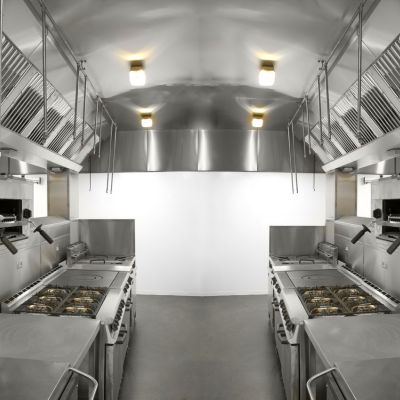In the bustling world of restaurants, Point of Sale (POS) systems emerge as indispensable tools, reshaping how businesses operate.
These systems are pivotal in modernizing and streamlining various aspects of restaurant operations.
With their ability to handle transactions seamlessly, manage orders, and provide real-time insights, POS systems have become the backbone of efficient and customer-centric service in the contemporary restaurant industry.
As we dive into their significance, it becomes clear that these systems are not just about transactions; they are vital contributors to the overall success and smooth functioning of modern restaurants.
What is a POS System in a Restaurant?
In the vibrant world of restaurants, a POS (Point of Sale) system plays a crucial role, acting as the digital heartbeat that coordinates various operations.
Let’s explore what a restaurant POS system is, breaking down its primary functions and highlighting its central role in the restaurant’s bustling environment.
Understanding a Restaurant POS System
At its core, a POS system in a restaurant is a sophisticated tool designed to streamline and enhance various operational aspects. It acts as a digital nerve center, seamlessly integrating different operations to ensure the smooth flow of transactions and orders.
Primary Functions
1. Transaction Processing Hub
The first and foremost function of a restaurant POS system is to serve as a transaction processing hub. It processes payments swiftly and accurately, providing a secure platform for customers to settle their bills.
This enhances customer satisfaction and contributes to the overall efficiency of the establishment.
2. Order Management
Efficient order management is another critical function. From the moment a customer places an order to its final fulfillment, the POS system manages the entire process.
It communicates seamlessly with the kitchen, ensuring that orders are transmitted accurately and promptly, enhancing kitchen efficiency.
3. Streamlining Restaurant Tasks
Beyond transactions and orders, a restaurant POS system plays a pivotal role in streamlining various tasks. It aids in inventory management, tracks sales trends, and provides valuable insights that empower decision-making.
This comprehensive approach contributes to the overall effectiveness of restaurant operations.
The Central Hub of Communication
In the busy routine of running a restaurant, good communication is crucial. A POS system acts as the central hub, fostering efficient communication between the front-of-house and back-of-house teams.
This ensures everyone is on the same page, leading to a synchronized and harmonious workflow.
Embracing Efficiency and Accuracy
In the fast-paced world of restaurants, where precision and speed are of the essence, a POS system emerges as a technological ally.
Automating various processes and centralizing information minimizes the likelihood of errors, contributing to enhanced operational efficiency.
Core Features and Functions of Restaurant POS Systems

A well-designed POS (Point of Sale) system is the linchpin for seamless operations. Let’s navigate through the essential features of a restaurant POS system, understanding how these functionalities contribute to elevating operational efficiency.
Essential Components of Restaurant POS Systems
1. Streamlined Order Management
At the heart of every thriving restaurant is an intuitive order management system within the POS. This empowers staff to input customer orders, accommodating special requests with ease efficiently.
Such a streamlined order management process expedites the ordering journey, ensuring accurate fulfillment of customer preferences.
2. Swift and Secure Transaction Processing Hub
Efficient payment processing is paramount in the restaurant landscape. A robust POS system is a secure transaction processing hub, facilitating swift transactions and accommodating diverse payment methods.
This not only enhances the overall customer experience but also ensures a seamless flow of tables.
3. Intelligent Inventory Management
Effective inventory management is a game-changer for restaurants. A POS system with intelligent inventory features tracks stock levels in real-time, updating with each transaction.
This functionality aids in monitoring ingredient quantities, minimizing the risk of stockouts, and optimizing overall inventory control.
4. Streamlining Restaurant Tasks
These features synergize to augment operational efficiency, streamlining various restaurant tasks. By automating manual processes, reducing errors, and providing real-time insights, a restaurant POS system becomes an indispensable tool.
This allows the staff to focus more on customer interactions and less on administrative tasks.
Unveiling the Harmonious Dynamics
Visualize a bustling restaurant during peak hours – orders seamlessly flowing from the front to the kitchen, payments processed swiftly, and inventory levels dynamically adjusted.
This coordinated effort is made possible by the core features of a restaurant POS system, ensuring a harmonious and efficient operation.
Embracing Modern Solutions
In the dynamic landscape of modern restaurants, where efficiency is synonymous with success, a POS system with these core features is not merely a tool; it’s a strategic ally.
It empowers restaurant owners and staff to navigate daily challenges with finesse, delivering a dining experience that is not only delightful but also impeccably managed.
Benefits of Restaurant POS Systems
In running a restaurant, a POS (Point of Sale) system isn’t just a tool; it’s the secret sauce that brings efficiency and success. Let’s explore the natural advantages that restaurants can enjoy by embracing this tech-savvy sidekick.
Pros of Using POS Systems
1. Accurate Order Processing
Say goodbye to mix-ups in taking orders. A POS system adds a touch of precision to order processing, ensuring that what customers ask for is exactly what they get. This means fewer mistakes and a dining experience that hits the sweet spot.
2. Improved Customer Service
In the restaurant game, happy customers are the ultimate win. POS systems make the ordering process smoother, reducing wait times and allowing staff to focus on what matters – giving customers a great experience. Happy customers not only come back but also spread the word.
3. Business Insights at Your Fingertips
Understanding how your business is performing is like having a secret ingredient. POS systems provide valuable insights into sales trends, popular menu items, and busy hours.
This information is a recipe for wise decisions, helping owners adapt to the ever-changing demands of the market.
A Partnership for Success
Think of a restaurant where every order is spot-on, service is efficient, and data back decisions are. This is the magic that POS system benefits bring – a perfect partnership between technology and success.
Ready for the Future
As the restaurant scene evolves, those armed with POS systems are ahead. These systems not only streamline day-to-day tasks but also future-proof businesses, keeping them ahead in an industry that thrives on staying fresh.
Types of Restaurant POS Systems

In the ever-evolving landscape of restaurant technology, POS (Point of Sale) systems come in various flavors, each catering to specific needs and preferences. Let’s look at the different POS systems that keep the wheels turning in the restaurant industry.
1. Cloud-based POS Systems
Embracing the power of the cloud, these systems operate online, offering accessibility from anywhere with an internet connection. The advantages? Real-time updates, easy scalability, and the freedom to manage your restaurant, on-site or away.
Advantages of Cloud POS:
- Accessibility: Access your POS system anytime, anywhere.
- Scalability: Grow your system with your business.
- Data Security: Robust security measures to keep your data safe.
2. Mobile POS Systems
Picture this: a waiter taking orders at the table or payments processed right where customers are seated. That’s the beauty of mobile POS systems. These handheld devices bring agility to service, enhancing the overall dining experience.
Innovations in Mobile POS:
- Tableside Ordering: Efficiently take orders at the table.
- Payment Flexibility: Accept payments on the go.
- Enhanced Customer Interaction: Connect with customers directly.
3. On-premise POS Systems
Traditional yet reliable, on-premise POS systems are physically installed at the restaurant. While they lack the remote accessibility of cloud-based systems, they offer stability and control over the system within the restaurant premises.
Choosing Between On-premise and Cloud POS:
- Control: Have direct control over your system.
- Stability: Operate independently of internet fluctuations.
- Customization: Tailor the system to specific needs.
Choosing the right POS system is like selecting ingredients for a signature dish – it’s all about what works best for your restaurant’s unique recipe for success.
Considerations for Choosing a Restaurant POS System
Selecting the right POS (Point of Sale) system for your restaurant is a pivotal decision that can significantly impact your daily operations and overall success. Let’s delve into the key considerations that should guide your decision-making process.
1. Scalability
Consider your restaurant’s growth trajectory. A scalable POS system grows with your business, accommodating an expanding menu, increasing transactions, and additional features as needed. It’s the foundation for future success.
Scalable Solutions for Restaurants:
- Adaptable: Easily expand functionalities as your business grows.
- Performance: Maintains efficiency with increased demands.
- Cost-Effective: Avoids the need for frequent system replacements.
2. Integration Capabilities
Seamless integration with other systems is essential for smooth operations. Your POS should effortlessly sync with accounting software, inventory management, and any other tools you use. A well-integrated system minimizes manual work, reducing the chances of errors.
POS System Integration:
- Efficiency: Streamline workflows with connected systems.
- Data Accuracy: Avoid discrepancies through automated syncing.
- Comprehensive Insights: Access consolidated data for informed decisions.
3. User-Friendliness
Your staff will interact with the POS system daily, making user-friendliness a non-negotiable factor. A user-friendly interface reduces training time, minimizes errors, and enhances efficiency.
User-Friendly POS Solutions:
- Intuitive Design: Easy for staff to understand and operate.
- Quick Training: Short learning curve for new employees.
- Efficient Transactions: Minimize errors during order processing.
Implementing and Optimizing a Restaurant POS System
Implementing and optimizing a POS (Point of Sale) system in your restaurant is a strategic move that can significantly enhance efficiency and customer service. Let’s explore the key steps to ensure a seamless integration.
1. Staff Training

Achieving POS Excellence through Training:
- Comprehensive Sessions: Conduct thorough training sessions for all staff members.
- Hands-On Practice: Provide opportunities for hands-on practice to reinforce learning.
- Continuous Support: Offer ongoing support to address questions or challenges.
2. Troubleshooting Tips
Navigating Challenges with POS:
- Designated Support: Appoint a dedicated staff member as the go-to person for POS-related queries.
- Regular Updates: Keep the system and staff informed about updates and troubleshooting protocols.
- Quick Response: Establish a protocol for swiftly addressing and resolving issues.
3. System Optimization
Maximizing POS Potential:
- Regular Audits: Conduct regular audits to identify and resolve any system inefficiencies.
- Customization: Tailor the system to your restaurant’s unique needs for optimal performance.
- Feedback Loop: Encourage staff to provide feedback on the system’s functionality for continuous improvement.
Conclusion
In conclusion, restaurant POS systems stand out as technological anchors, ushering in a new era of streamlined operations, improved customer service, and heightened overall efficiency in the restaurant industry.
Their digital capabilities revolutionize the complex coordination of daily tasks, providing a smooth and modernized experience for restaurant staff and patrons.
As we move forward, the continued integration and evolution of POS systems are set to shape the future landscape of restaurant management, ensuring a dynamic and customer-centric approach in this vibrant sector.








